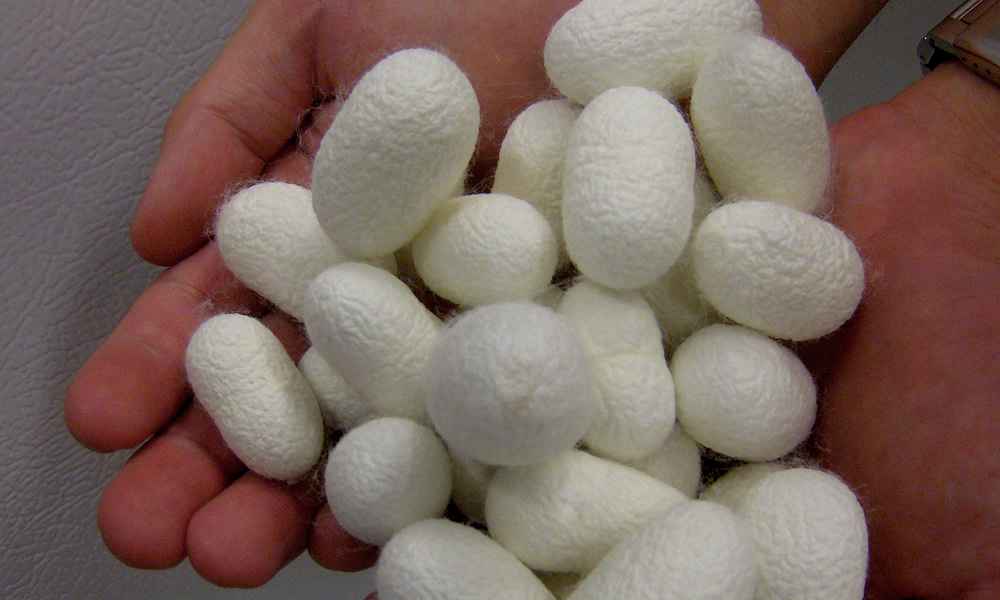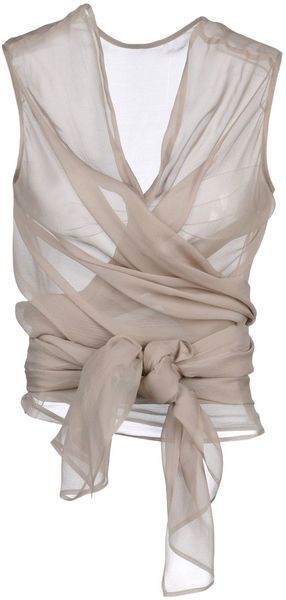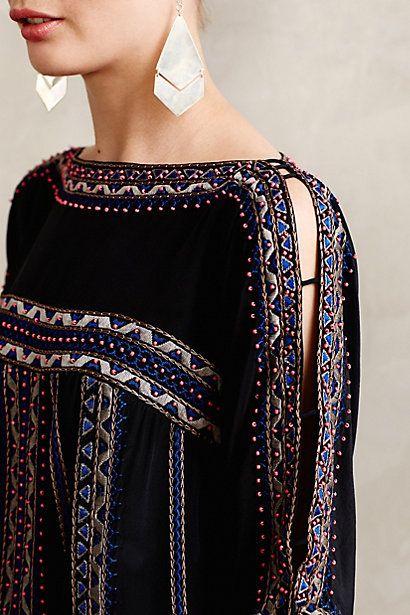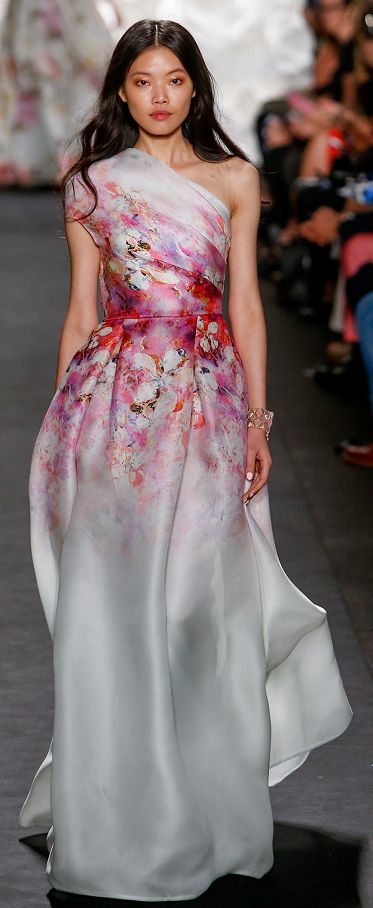Silk – a natural material that has accompanied us for centuries
Silk – a natural material that has accompanied us for centuries.
The first mentions of silk come from China and date back to the 3rd millennium BC. From China, silk began to be imported to Persia and Rome, where it became more and more popular. Currently, silk is mostly produced in China, India, Vietnam, Russia and Japan.
How silk is obtained
Real silk is obtained from the cocoons of the butterfly, which lays eggs the size of a poppy. In the course of 30 days, the cocoons of the silkworm caterpillar shed 4 times until they grow to a size suitable for spinning. The silkworm creates an irregular spiderweb BOURA in which it cocoons. After pupation, the caterpillars secrete the semi-solid substance FIBROŇ and the gluey substance SERICIN, which wraps and glues the fibers together. The butterfly caterpillar secretes an alkaline fluid that corrodes and destroys the cocoon. In order to spin silk fibers, the cocoon must be intact and therefore it is necessary to kill the butterfly before hatching. The most valuable fiber of several hundred meters is in the middle of the cocoon. Its cover and inner part are made of coarser and shorter fibers. The real silk obtained is called Organzyn and Dupion.
Special treatments of real silk
The special treatment of natural silk is called deliming, during which the silk acquires a higher gloss and purity of color. During descaling, the glue (sericin) in the soap bath is removed and up to 25% of its weight is lost. With this treatment, the fibers reach their natural weight.
If we want to find out whether the fabric contains silk, a combustion test can be performed. When ignited , the silk fabric will rust and after burning will leave a porous charred ball that can be easily crushed.
What properties does silk have?
Silk's outstanding qualities include its luster and texture. Real silk has one of the most beautiful and pleasant sheens of natural fabrics, and its texture is soft and supple.
In addition to real silk , we have natural silk , which is obtained from various silkworms living in the wild, mainly in Brazil and Madagascar. Natural silk is called TUSAH and its cocoons are larger than natural silk . Not all Tusah cocoons can be used as twigs and leaves can become entangled in their cocoons.
| Property | Property description | Intensity (1-5) |
|---|---|---|
| Sense of touch | very smooth and soft to the touch | 5 |
| Aesthetic impression | shiny and luxurious look | 5 |
| Weight and density | very light and thin material | 5 |
| Tensile strength | relatively high tensile strength | 4 |
| Absorbency, absorption | has a moderate ability to absorb liquids | 3 |
| Color fastness | sufficient, but the color may fade with frequent washing and exposure to the sun | 3 |
What to sew from real silk
Silk has a wide range of possible uses. Most often, these fabrics are used for women's dresses, men's summer suits, underwear, blouses, dresses, tunics, scarves and cups.
Silk trousers for evening events
Silk trousers for evening events are characterized by their elegant elegance and luxurious appearance. However, pants made of cotton and denim are also popular for different occasions. Cotton is particularly popular for its breathability and comfort, while denim is highlighted for its durability and casual look.
Silk shirt for a luxurious look
A silk shirt provides a luxurious look that is perfect for formal events or stylish parties. Alternatively, cotton and polyester shirts offer more versatility and durability. Cotton is known for its breathability and comfort, while polyester offers high wrinkle resistance and is easy to maintain.
Silk dress for evening events
Silk dresses are ideal for evening events where they offer a sense of luxury and elegance. However, cotton and satin dresses are also popular. Cotton is popular for its breathability and comfort, while satin offers a shiny and smooth finish that is also suitable for formal events.
Silk skirt for an elegant look
A silk skirt can provide an elegant look that is suitable for various occasions. Alternatives like cotton and polyester are also popular choices for skirts. Cotton is popular for its breathability and comfort, while polyester is a durable material that is easy to maintain.
Silk blouse for comfortable wear
A silk blouse is the ideal choice for comfortable wear with a touch of luxury. However, cotton and polyester blouses are also popular.
Silk jacket lining
The silk lining to the jacket adds a luxurious feel and comfort when worn. Jackets made of wool and polyester are also popular. Wool is exceptional for its thermal properties and elegance, while polyester is a highly durable, low-maintenance material.
Silk undershirt for luxury underwear
The silk undershirt provides a luxurious feel against the skin and is an ideal choice for luxury underwear. Cotton and lycra tank tops are also popular. Cotton is known for its breathability and comfort, while lycra is popular for its elasticity and wearing comfort.
How to work with silk and lose it
Considered one of the most luxurious fabrics, silk is highly prized for its soft feel and lustrous appearance. This naturally produced fabric is ideal for sewing a wide range of garments, including evening dresses, blouses and luxury lingerie.
Silk is a delicate material and requires the right selection of tools for its processing. The needles should be fine and sharp to avoid damaging the fabric. Threads can be silk to match silk garments for a cohesive look and feel. As for sewing machines, high-quality fine-adjustment machines are ideal for sewing silk .
Silk requires gentle handling when cutting and sewing. Sharp scissors should always be used to avoid pulling the fabric. Gluing silk is not usually recommended as glues can damage the delicate material.
Silk is a delicate material that requires special care and maintenance to maintain its beauty and longevity.
- Washing silk
Silk should always be washed gently. Hand washing in warm water using mild detergents designed for silk is recommended. You should never use bleaching agents that could damage the silk.
- Ironing silk
Silk requires gentle ironing at a low temperature. You should always use steam and have a protective cloth between the iron and the silk to avoid damaging the fabric.
- Drying silk
Silk should always be dried naturally, preferably in the shade. You should never expose silk to direct sunlight or tumble dry it, which could cause damage and loss of luster.
- Silk storage
Silk should be stored in a cool, dark and dry environment to maintain its quality and luster. It should be folded carefully to prevent creases and protected from pests such as moths. Special silk wraps can be used for long-term storage to ensure maximum protection of the material.
What materials to combine silk with
Due to its luxurious texture and soft shine, silk can be combined well with many other materials. It can be paired with coarser fabrics such as linen or denim for beautiful contrasts. Due to its naturally smooth nature, it also pairs well with other smooth and shiny fabrics such as satin or velvet , enhancing its luxurious character.
Its luminous quality allows silk to be combined with a wide range of colors, whether it is soft pastel tones or bold and saturated colors. Silk also absorbs colors well, meaning that the colors on silk fabrics are often extremely vivid and deep.
Silk is often used in various types of clothing, where it can be used on its own or layered with other materials. Thanks to its lightness and breathability, it is ideal for summer dresses, tunics or blouses.
In winter, silk can be used in layering, where it can provide a light but thermally insulating layer under outerwear. Its luxurious look and feel also mean it is often used for detailing and decoration on products such as suits, dresses or underwear.
Silk is also a popular choice for decorative elements such as ribbons, bows or appliqués. Its natural shine and smoothness add grace and elegance to these details. When choosing complementary materials for silk garments, it is important to consider how different textures and colors complement each other to achieve a harmonious look.
In our e-shop , you can find silk with an admixture of cotton under the name silk batiste , in addition to silk batiste , also plain Dupion silk .
photo source: scicasts.com, lideuhk.cz, pinteres.com






This online store stores cookies that help it function properly. By using our services, you agree to their use.